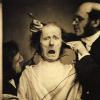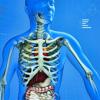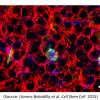News and Press Releases
Nov 17 2015 | NeuroTalk S5E7: Marc Tessier-Lavigne
NeuWrite West talks with Marc Tessier-Lavigne, Carson Family Professor and at Rockefeller University.
Nov 11 2015 | Stanford News
Stanford theater historian Matthew Wilson Smith's new research shows how 19th century brain science has nerved its way into the drama of our lives, both onstage and off.
Nov 10 2015 | NeuWrite West
How can the brain think that the brain itself hurts (e.g., during a headache)? I don’t understand how the brain could even understand the concept of the brain hurting (i.e., have the machinery for concluding that the brain itself hurts), since the brain has no pain receptors.
Nov 9 2015 | Stanford News
A new technology has promise to safely find buried plastic explosives and maybe even spot fast-growing tumors. The technique involves the clever interplay of microwaves and ultrasound to develop a detector like the Star Trek tricorder.
Nov 8 2015 | Stanford News
Karl Deisseroth has been awarded a $3 million Breakthrough Prize in life sciences for his pioneering work in optogenetics. Stanford Physicists Xiao-Liang Qi and Leonardo Senatore won New Horizons in Physics Prizes for their outstanding contributions to fundamental physics.
Nov 8 2015 | Stanford Medicine, News Center
Karl Deisseroth, MD, PhD, professor of bioengineering and of psychiatry and behavioral sciences at Stanford, is the winner of a $3 million 2016 Breakthrough Prize in life sciences for his contributions to the development of optogenetics.
Nov 6 2015 | Stanford Medicine - News Center
With the donated tissue, a Stanford team has created the first cell line and mouse model of diffuse intrinsic pontine glioma, a deadly tumor.
Nov 5 2015 | YouTube
Researchers are growing parts of the human brain in petri dishes to study disorders like autism and schizophrenia and develop treatments. It’s part of a movement to create “organoids,” miniature versions of the body’s organs for medical research.
Nov 4 2015 | NeuWrite West
Neural stem cells in the brain are responsible for generating new cells for regular brain maintenance, as well as regeneration and healing after injury.
Nov 3 2015 | NeuWrite West
There are many representational maps of the body in the brain, and the brain is a part of the body after all… so how much does the brain ‘know about itself’? There are three types of representation here - physical sensations, energy usage, and abstract thought. Let’s start with physical touch.













